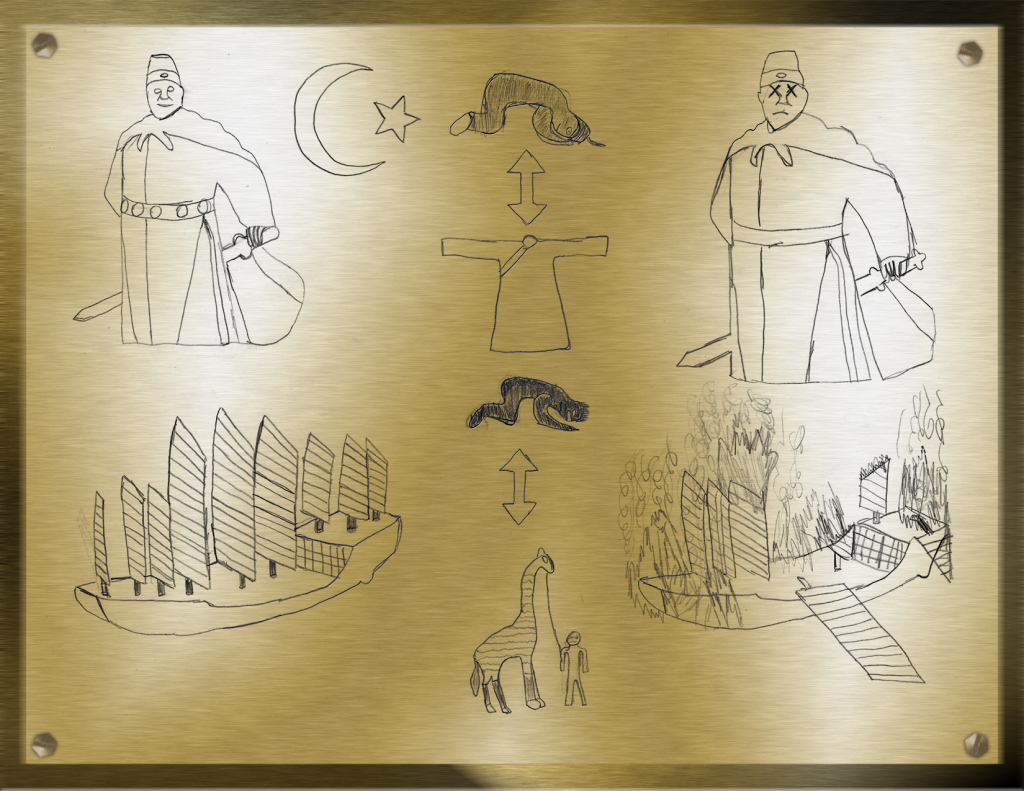
| Time Period | 1405–1433 |
| Geographical Region | China, India, Southeast Asia, the Middle East, Africa |
| List of Symbols |
|
From 1405 to 1433 the Ming Dynasty launched seven maritime expeditions with the goal of projecting their power to the rest of the world. The primary method for their power projection was to hand out symbols of the Ming Dynasty’s wealth in return for gifts from and trade with the peoples they visited. The wealth that the Ming Dynasty brought on these voyages was carried on enormous treasure ships which were four hundred fifty feet long and one hundred eighty feet wide. The ships are also famous for having nine masts. These expeditions were led by Admiral Zheng He, a Muslim eunuch. The emperors of the Ming Dynasty were very inconsistent with respect to how they governed the empire. This had two important consequences. The first consequence was that policy could change dramatically when a new emperor took the throne. The second is the this inconsistency lead a distrust of the emperor by the governing officials, which in turn led to palace eunuchs like Zheng He gaining a lot of power and influence. My plaque tells the story of the voyages of the Ming treasure fleet. I have arranged my drawings into three columns that should be read from top to bottom as if each picture (or set of pictures) were a Chinese character.
The first picture in the first column is a drawing of Admiral Zheng He’s portrait. Immediately to the right of Zheng He’s portrait is the Muslim crescent and star. This is meant to indicate that he is a Muslim. I arranged these two drawings from left to right (but in the same column) in order to mimic how two separate Chinese characters can be combined to make a new character. The second drawing in the first column is an example of one of the enormous Ming treasure ships under Zheng He’s command. This is indicated by the ship’s nine masts. The treasure ships were a marvel of nautical engineering that far surpassed the famous ships used by the European explorers that were built decades after the Ming fleet. The size of the ships likely impressed the people in the cities that the fleet visited. It also made Ming China the naval superpower of the era.
The next column depicts the trade that occurred during the missions themselves. I depict two separate transactions; the first transaction is with an Indian man and the second is with a man from Africa. Both men are kowtowing as a sign of respect and awe of Ming power and wealth. In return for paying his respects to the Ming, the Indian man is receiving a silk robe. The African man is shown paying his respects and providing Zheng He with a giraffe to bring back to the emperor. Both sets of pictures are separated by a double sided arrow to symbolize an exchange.
In the third and final column, I bring the story to a close. The first drawing shows another portrait of Zheng He, however in this drawing he has an “X” over both of his eyes in order to symbolize that he has died. The second drawing shows one of the Ming treasure ships burning, with its masts either toppled, on fire, a combination of the two or even missing completely.
The Ming treasure fleet represented the pinnacle of Imperial China’s naval power, which far exceeded that of the nations of Europe at the time. After returning from the seventh voyage, however, the new emperor ordered the Ming fleet to be burned since he had no interest in continued naval exploration or maritime power. The decision to destroy the fleet and abandon continued development of naval forces is significant since four centuries later, the European powers would be able to dominate the Qing Dynasty as a result of their naval supremacy.
JONAH BURSTEIN is a senior at the University of Rochester, majoring in business and minoring in history. On campus, he is a member of the baseball team. Jonah is working to become an entrepreneur after he graduates.
